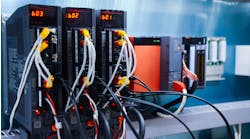Our process plants have been the epitome of data collection. Over the years, sensors, instruments and control technologies have fully automated our processes, making refineries and chemical plants much more manageable and reliable, as well as a safe place to work. Technology evolves continuously; this column will focus on some of the state-of-the-art data and testing that can make our processes “smart” so we not only realize higher energy efficiency but also reap the benefits of greater reliability in our operations.
[pullquote]
Some industries use what’s known as “fault detection and diagnostics,” or FD&D; I strongly believe we can apply FD&D very effectively in our plants; the key is collecting the right data. Most times, this is not an issue given our process controls background. However, I sometimes find it a major issue when working with utilities at plants. Process heaters, steam systems, compressed air systems, pumping stations, chiller and refrigeration units, etc., often lack the level of data collection and details compared to process units. Because most processes run continuously and it can be costly to shut down, plants rarely retrofit data collection points unless a critical safety or operational issue is involved. Hence, I believe many of those data collection items should be incorporated right at the design phase or when completing major projects or upgrades.
But let’s say you have everything you need from a data collection perspective to do FD&D. We then come to the second major issue. What to do with all those data? Data storage is cheap. It also can help with knowledge transfer. For example, I have been doing energy assessments for the past 25 years. After I have a good understanding of a system, I review the process and instrumentation diagrams and graphic screens; sometimes I am surprised to find plant engineers unaware of certain instruments available to them. The design engineer provided the ability to monitor data but the operations folks were never trained — the ball got dropped in the transfer of this knowledge base!
Let me share a couple of cases that can help you implement FD&D, enhance the energy efficiency of your systems and improve reliability.
Monitor compressor and steam-turbine suction and discharge temperatures. We always monitor pressures (suction and discharge) for rotating machines but rarely temperatures. Interestingly, pressures are predetermined and may be set points; operations will turn on or off extra machines based on pressures. Temperatures, on the other hand, are key to the equipment’s isentropic efficiency. Higher discharge temperatures imply lower efficiency and extra operating cost. Additionally, they may indicate possible issues with the rotating equipment that may signal inception of a major fault, which could lead to a breakdown and an unplanned, costly system shutdown.
Monitor and trend heat exchanger effectiveness (UA).We always want our heat exchangers to work with the highest efficiency possible. Every heat exchanger is designed for a heat duty given a driving force (log mean temperature difference). Once designed, the area (A) is fixed and doesn’t change unless we plug tubes, remove or add plates, etc. While in service, we also collect information on flow rates, inlet and outlet temperatures, etc., and then look for a difference in temperature (also known as approach) to determine if the heat exchanger needs cleaning. This is a good way to do it — provided all flows and heat duties are constant. I highly recommend doing this at minimum, but the correct FD&D method would be to calculate the overall heat transfer coefficient (U) or UA and trend it. We also should compare this to the design to make a very informed decision about fouling.
I am going to leave you here with a quote from one of my mentors: “If you do energy efficiency correctly, you will have automatically increased the reliability of the system.” With our current technology, we can make smart systems do FD&D continuously for an enhanced and reliable performance!


